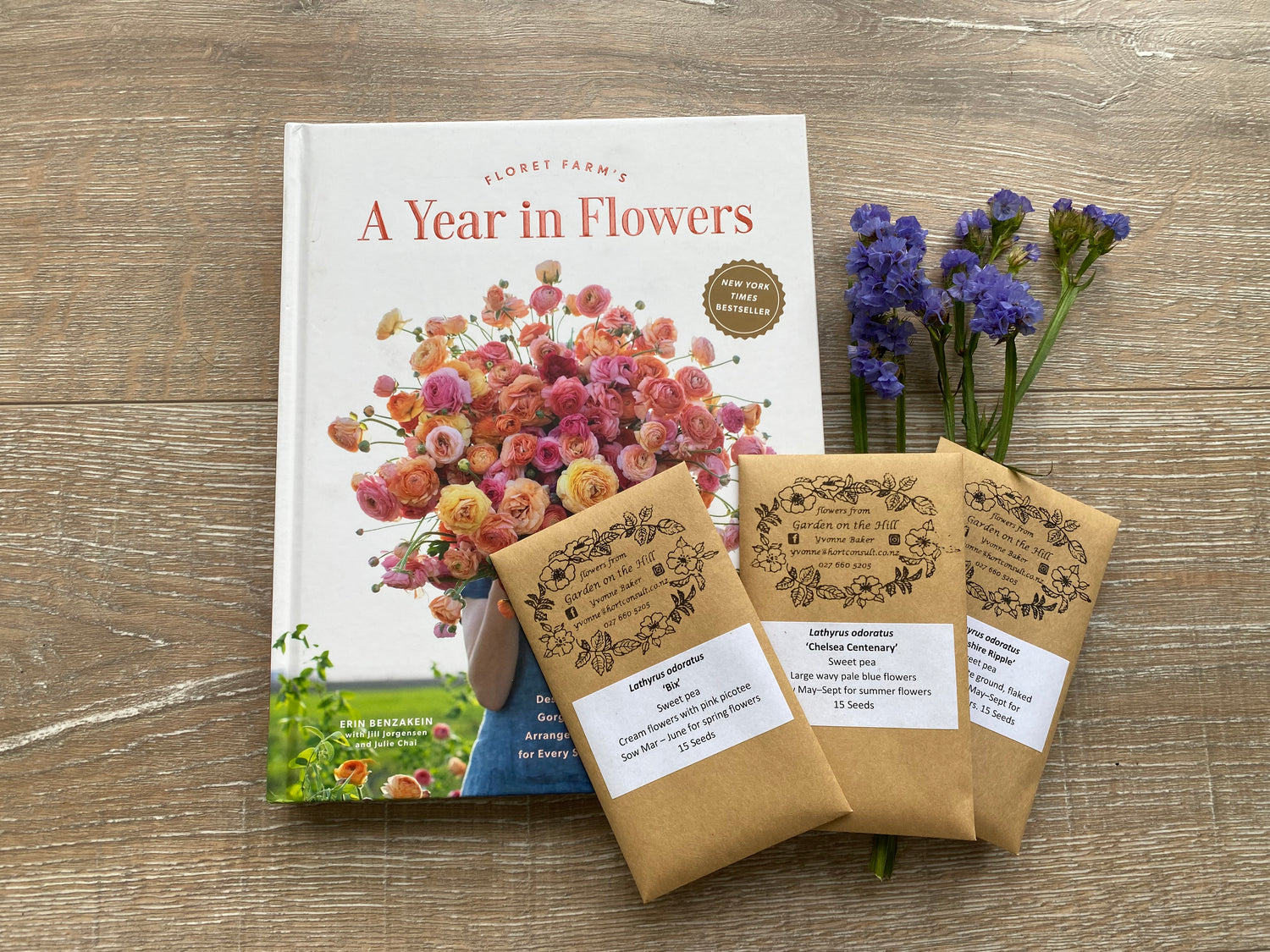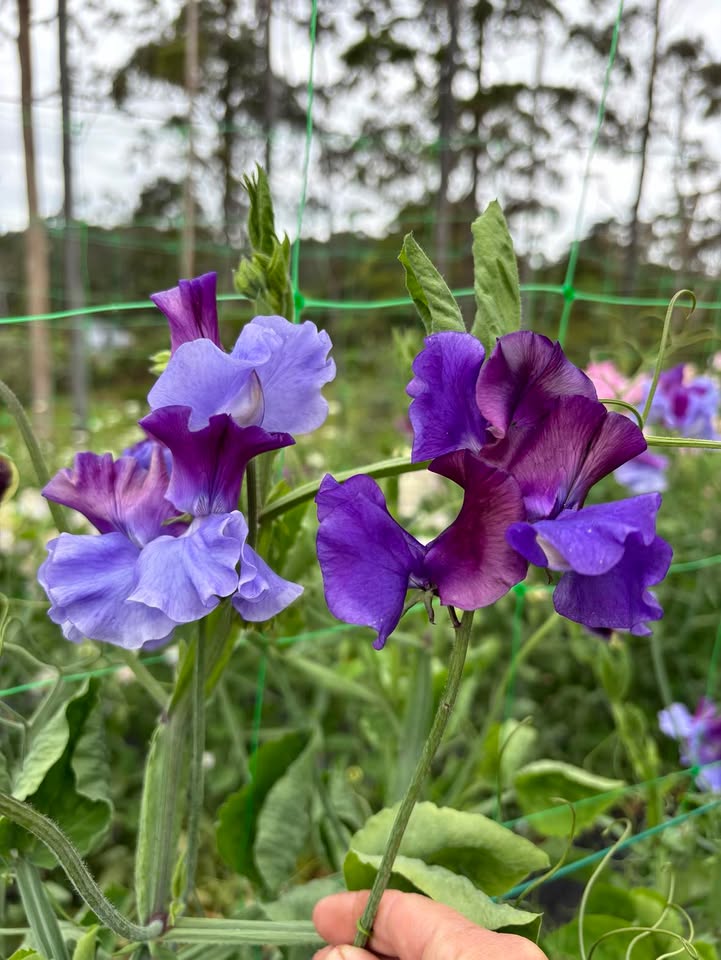I've always loved sweet peas - ever since I was a child growing them in my mum’s garden back in England. One year, I entered some in the village show and won, much to the annoyance of my friend’s father, who had expected to take the prize himself!
Since then, I’ve grown sweet peas on and off in various gardens, both in England and here in New Zealand.
About five years ago, a social visit to my good friend of nearly 20 years, Dr. Keith Hammett, turned into a part-time job helping him - fitted around raising our two boys. That experience reignited my passion for sweet peas. Spring and summer became filled with daily conversations about the season’s crops - what we were growing, how things were progressing, planting, observing, and recording the stunning blooms. It inspired me to learn more and grow more.
Now, on my flower farm in Waitākere, I’m doing just that.
This photo was taken during Sunday’s task - an essential but often frustrating job known as rogueing. After carefully planting out and labelling each line, it's always disappointing to find a few blooms that don't meet expectations. These “rogue” plants can appear for several reasons. Most commonly, it's due to "jumped seed" - a mix-up that can happen during harvesting or sowing. In my case, birds were to blame. As the seeds germinated and broke through the soil, blackbirds saw an opportunity and pulled out the seedlings, eating the seed cotyledons. The growing shoots were left behind and, since they’d already absorbed the nutrients they needed from the seed to germinate, they keep on growing, so I carefully replanted them. But, despite my best efforts to return each one to its correct pot, some inevitably got mixed up. I’ll definitely have a more secure plan in place for sowing this year!
Sometimes rogues appear for a different reason - because a seed line isn’t fully “fixed.” Even with years of careful breeding, a plant might occasionally produce a flower that deviates from the expected form. For example, the stunning ‘North Shore’ cultivar is a bicolour bloom with a dark blue standard and pale blue wings. Every now and then, it throws out a nearly all-dark blue flower. In some cultivars, the difference is subtle, so you really have to keep a close eye on them.
Another possible cause of rogue blooms is virus, which can be easily spotted by the striped pattern it creates in the flowers. Viruses are typically spread by aphids that feed on clover, so it’s important to remove any nearby clover before planting.
Whatever the cause, rogue plants must be removed - especially if you're planning to save seed. If not, you risk the same issues popping up again next season, birds or no birds!


